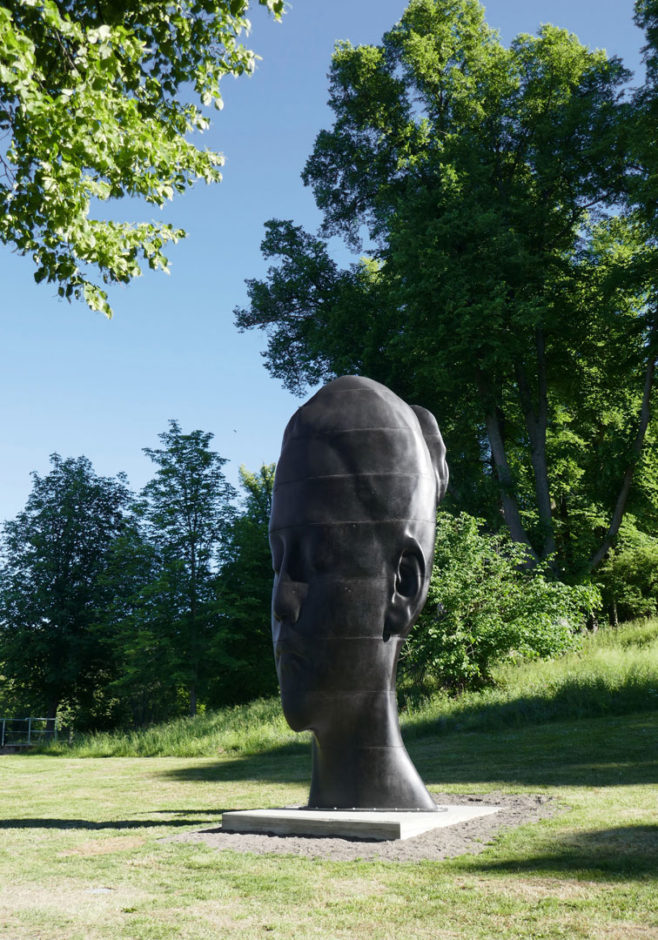
Jaume Plensa was born in Barcelona in 1955. He graduated from the Llotja Advanced School of Art and Design and the Royal Academy (Sant Jordi) in the city. The artist’s first personal exhibition took place in 1980 at the Fundació Joan Miró. Plensa is the recipient of many state and international awards in the sphere of art, including the Velazquez Prize (2013) and the Global Fine Art Award bestowed for his project for the parallel programme of the 56th Venice Biennale (2015). He is also a Chevalier of the French Ordre des Arts et des Lettres (1993).
The Spanish sculptor has achieved considerable fame and worldwide recognition with his large-scale sculptural installations. The artist’s works are exhibited in galleries and museums, as well as urban public spaces. His gigantic works have become part of the cityscape in many places, including Chicago, London, Montreal, Tokyo and London. The ease and transparency with which the sculptor handles heavy materials, existential feelings, reflection on the self and the surrounding world – all that is present in Jaume Plensa’s style, making it possible to call him an artist of sensations, contemplations and ideas.
In his work he explores questions of existence: its physical and spiritual essence, the link between past and present, relations between human beings and nature. Through sculpture he constructs his view of the world, without, however, attempting to figure it out completely.
In the work entitled Carlota, Plensa displays his brilliant ability to create illusions. He constructs a sculptural head in such a way that it seems to have correct proportions and to be three-dimensional. The closer the viewer gets, the more obvious the distortion and elongation of the figure become and the optical effect that the sculptor employed is revealed. The artist’s striving to deceive our perception is also emphasized by the choice of material. The sculpture is made of cast iron, yet the stretched proportions and the surfaces that reflect light give the piece a light, elegant appearance.
In his work, Plensa often repeats the image of Carlota, varying the scale and material. The artist forces the viewer to freeze on the boundary of two worlds: the material and the illusory. Plensa depicts his model with her eyes shut, as if calling on those looking at the eyes closed for an instant to go inside themselves and think about their deceived sense of sight. In the sculptor’s opinion, Carlota symbolizes human dreams that become visible and tangible when people close their eyes.
This sculptor often works with space on a large scale. Creating works that are inscribed in a landscape, he initiates a dialogue between the object and its surroundings, the architecture and people who populate that space. The Carlota on display in the Great Courtyard of the Winter Palace enters into a dialogue with the images from Antiquity and the Neo-Classical era in the collection of the State Hermitage, bringing together Mediterranean art of past and present.
quepintamosenelmundo, art, visual arts, spanish art, art online, contemporary art, sculpture
State Hermitage. Russia, 190000, St Petersburg, Dvortsovaya Naberezhnaya (Embankment), 34
https://www.hermitagemuseum.org
Image: Gallery Anderson / Sandström
